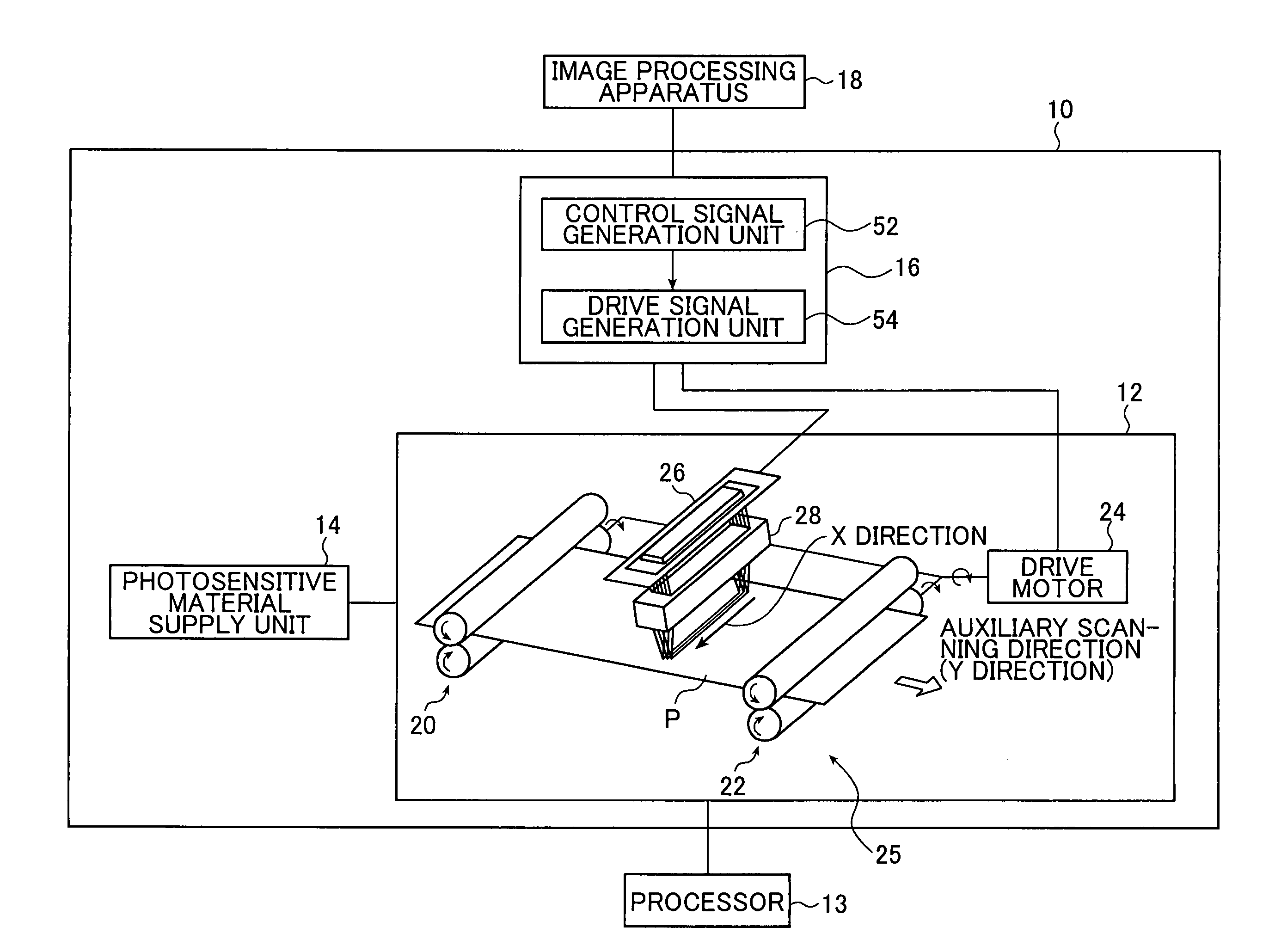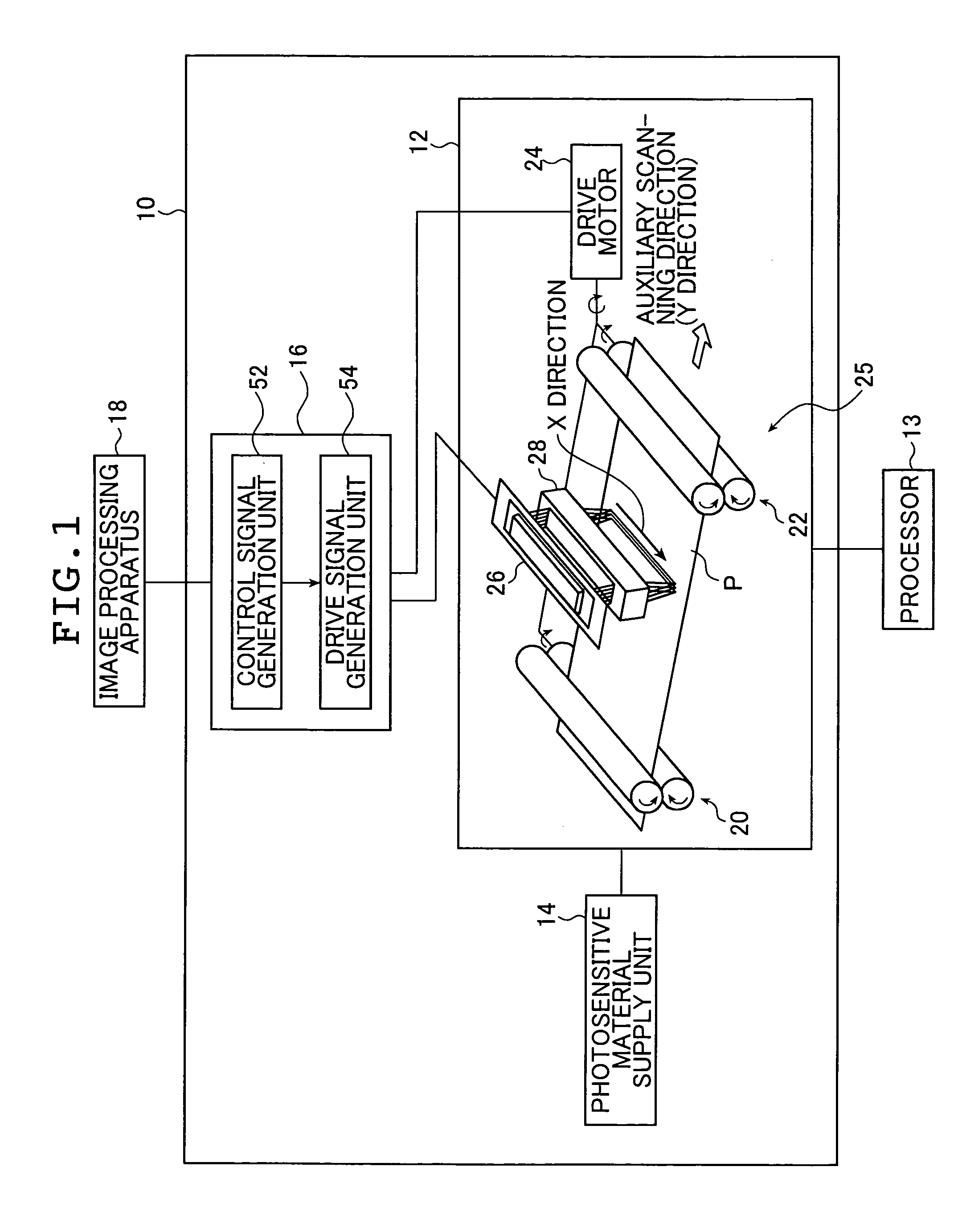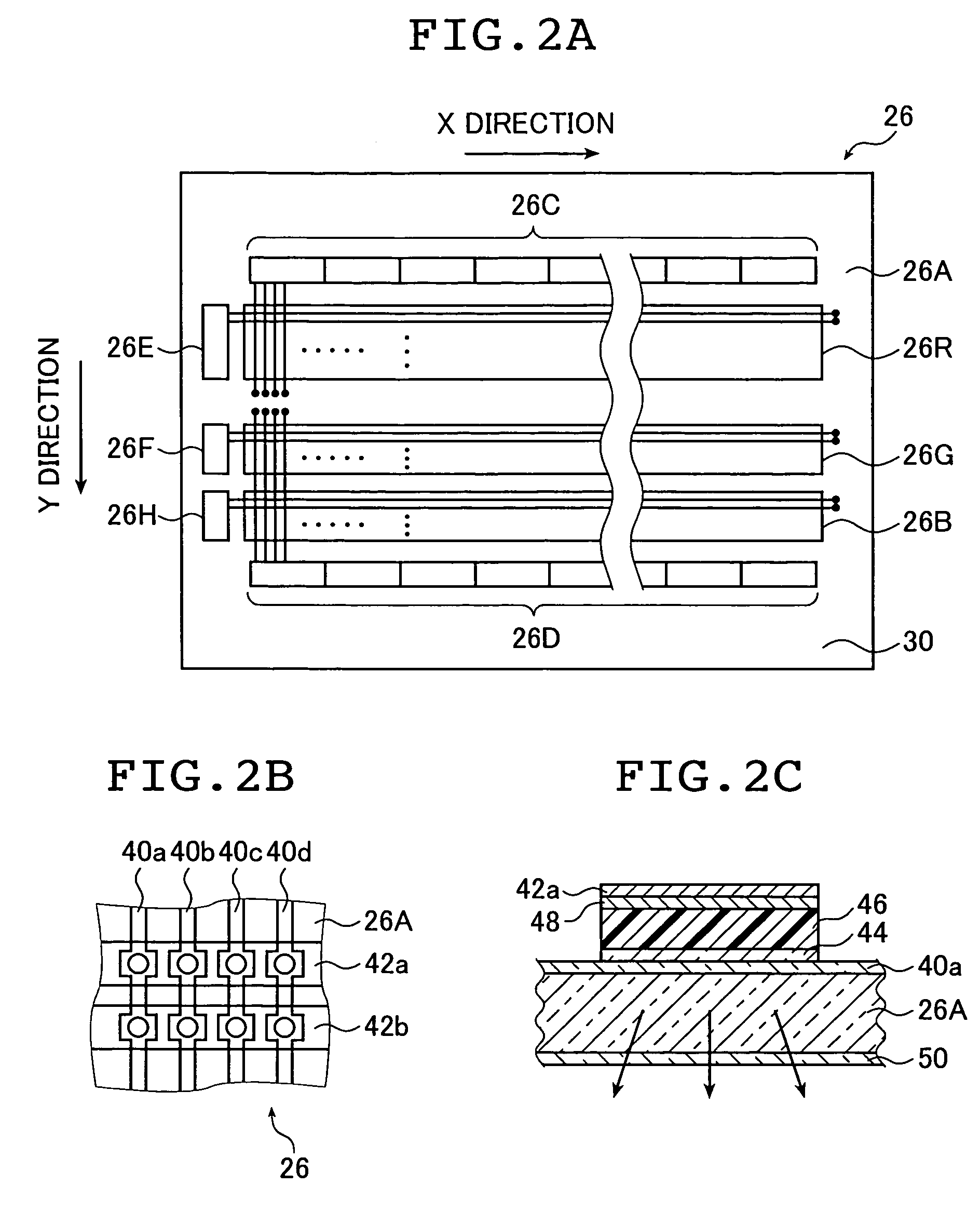Image forming apparatus and image forming method
a technology of image forming apparatus and forming method, which is applied in the direction of instruments, printing, visual presentation, etc., can solve the problems of reducing the brightness of organic el elements with use, difficult to realize an apparatus that outputs a high quality image, and difficult to produce organic elements, etc., to achieve smooth reproduction of the density gradation of images
- Summary
- Abstract
- Description
- Claims
- Application Information
AI Technical Summary
Benefits of technology
Problems solved by technology
Method used
Image
Examples
Embodiment Construction
[0074]The image forming apparatus and the image forming method according to the present invention will now be described in detail based on preferred embodiments illustrated in the accompanying drawings.
[0075]FIG. 1 is a construction diagram of a color printer 10 as an example of the image forming apparatus according to the present invention that forms an image by exposing a photosensitive material.
[0076]The printer 10 includes a head unit 12 that exposes and records a latent image on a photosensitive material P using a supplied image input signal, a photosensitive material supply unit 14 that transports and supplies the photosensitive material P to the head unit 12, and a signal processing unit 16 that generates a drive signal for driving the head unit 12 in order to expose and record an image on the photosensitive material P.
[0077]The signal processing unit 16 in the printer 10 is connected to an image processing apparatus 18 so that a post-image-processing signal subjected to imag...
PUM
 Login to View More
Login to View More Abstract
Description
Claims
Application Information
 Login to View More
Login to View More - R&D
- Intellectual Property
- Life Sciences
- Materials
- Tech Scout
- Unparalleled Data Quality
- Higher Quality Content
- 60% Fewer Hallucinations
Browse by: Latest US Patents, China's latest patents, Technical Efficacy Thesaurus, Application Domain, Technology Topic, Popular Technical Reports.
© 2025 PatSnap. All rights reserved.Legal|Privacy policy|Modern Slavery Act Transparency Statement|Sitemap|About US| Contact US: help@patsnap.com



